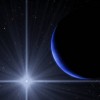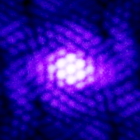|
Sun Similarity Index
|
|
| osterizer8 | Date: Sunday, 05.05.2013, 16:33 | Message # 1 |
 Space Tourist
Group: Users
 United States
United States
Messages: 33
Status: Offline
| I would like to suggest a system similar to the ESI to measure the similarity of stars to our sun. It could be implemented in the same manner that the ESI is in that it could use a decimal system to measure similarity to Sol. I am aware that there is no real-world classification for this other than the various classifications for luminosity, size, and temperature, but I think that this would be a cool addition to Space Engine.
|
| |
| |
| Spica | Date: Sunday, 05.05.2013, 16:59 | Message # 2 |
 Astronaut
Group: Users
 Germany
Germany
Messages: 45
Status: Offline
| This isn't necessary. The similarity of a star to our sun is shown by the spectrum of the star. Every star with a G2 V classification is like the sun in temperature, mass and radius.
Spica
------------------------------------------------------------------------------------
AMD Phenom II X4 4x3.2 GHz
8 Gb RAM DDR3
GeForce GTX 650 TI 1024 Mb
|
| |
| |
| smjjames | Date: Sunday, 05.05.2013, 17:08 | Message # 3 |
|
World Builder
Group: Users
 United States
United States
Messages: 913
Status: Offline
| Really not needed, besides, if you have a planet in the right place around a K type star, you can have temperatures similar to that of Earths. The sky wouldn't be the same of course, but it would be comfortable.

|
| |
| |
| Watsisname | Date: Sunday, 05.05.2013, 21:11 | Message # 4 |
 Galaxy Architect
Group: Global Moderators
 United States
United States
Messages: 2613
Status: Offline
| Agreed with Spica and smjjames -- spectral type is sufficient to compare stars.
The reason ESI is useful for comparing planets is because the parameters you may be interested in all depend on a number of different things. For instance a planet's surface gravity depends on its mass and radius. Its mass depends on its radius and density. Its temperature depends on its albedo, orbital distance, and the sun's luminosity. ESI is a nice way of taking all these things and computing from them a single value with which to compare how similar the planet is to Earth.
Stars, on the other hand, are remarkably simple. Almost everything about them is determined by just two things: mass and age. Its because of this simplicity that the HR diagram is so useful in astronomy. You can classify stars by their spectral type and this will tell you their temperature, luminosity, size, mass, and extent of their habitable zones. 

|
| |
| |
| osterizer8 | Date: Monday, 06.05.2013, 21:48 | Message # 5 |
 Space Tourist
Group: Users
 United States
United States
Messages: 33
Status: Offline
| Yes, now I realize how simple it is to classify stars. I probably should have done more research on the subject before posting this. Thanks for the explanation Watsisname! 
|
| |
| |
| n3xt | Date: Tuesday, 07.05.2013, 01:42 | Message # 6 |
 Explorer
Group: Users
 Netherlands
Netherlands
Messages: 184
Status: Offline
| Simple...
I've been working in Word for half a day now figuring out the best and probably the most
accurate list of luminosity classes.
Finally managed to order it up a little bit, it made me nutz 
Eventually you get all kinds of luminosity classes such as (just random examples):
B0.5 Ia-Iab
O9 Ia0e
G1.5 Va-IV
K6 IIab
M0 Iab
WN9/Ofpe
B2 Ia+
F7 V-IV
sdM7
esdM7
A0 Ib-Iab
G9 IIIb
sdO4
G0 Ia0
etc... etc... Craaazy !  lol but I love to figure it all out xD lol but I love to figure it all out xD
All out of my mind, can't get enough of stars! 
Astronomy is like a superaddictive drug xD
Edited by n3xt - Tuesday, 07.05.2013, 01:44 |
| |
| |
| smjjames | Date: Tuesday, 07.05.2013, 01:50 | Message # 7 |
|
World Builder
Group: Users
 United States
United States
Messages: 913
Status: Offline
| Yeah there are lots of smaller subclasses for luminosity and spectral types, and metallicity in some cases, but for the purposes of SE, it's best to keep it simple.

|
| |
| |
| n3xt | Date: Tuesday, 07.05.2013, 02:33 | Message # 8 |
 Explorer
Group: Users
 Netherlands
Netherlands
Messages: 184
Status: Offline
| I agree with you, smjjames
Now that we're on th Suggestion thread anyway, I thought before I go and take a nap ~.~
How about adding only a few more luminosity classes into SE ?
Examples:
1. Ia0 (hypergiants)
2. Ia (luminous supergiants)
3. Iab (bright supergiants)
4. Ib (supergiants)
5. II (bright giants)
6. III (giants)
7. IV (subgiants)
8. V (Blue, white, yellow and orange ''main sequence stars'' and ''red dwarfs & brown dwarfs'')
9. VI / sd (subdwarfs)
10. D / WD (white dwarfs)
I know... alot of them are already included so it's nothing special. However, just a suggestion
Two major suggestions for luminosity classes would be:
1. Change luminosity class 0 for hypergiants into Ia0 (typically for blue, white and yellow hypergiants)
or Ia (for certain orange and red hypergiants, like VY CM and etc...)
Reason: I've literally checked all known hypergiant stars and found none that's classified as ''0''
2. Add luminosity class ''Iab'' to fill the gap between Ia and Ib and rename it as ''bright supergiants''
Reason: Well so far when I've chekced luminosity classes it was refered (Iab) as subluminous or less luminous. And I thought why not making it like a counterpart of bright giants (on steroids).
Just a suggestion, I'll continue enjoing SE anyway 
Good nigh't... I'll edit tomorrow 
Edited by n3xt - Tuesday, 07.05.2013, 12:15 |
| |
| |